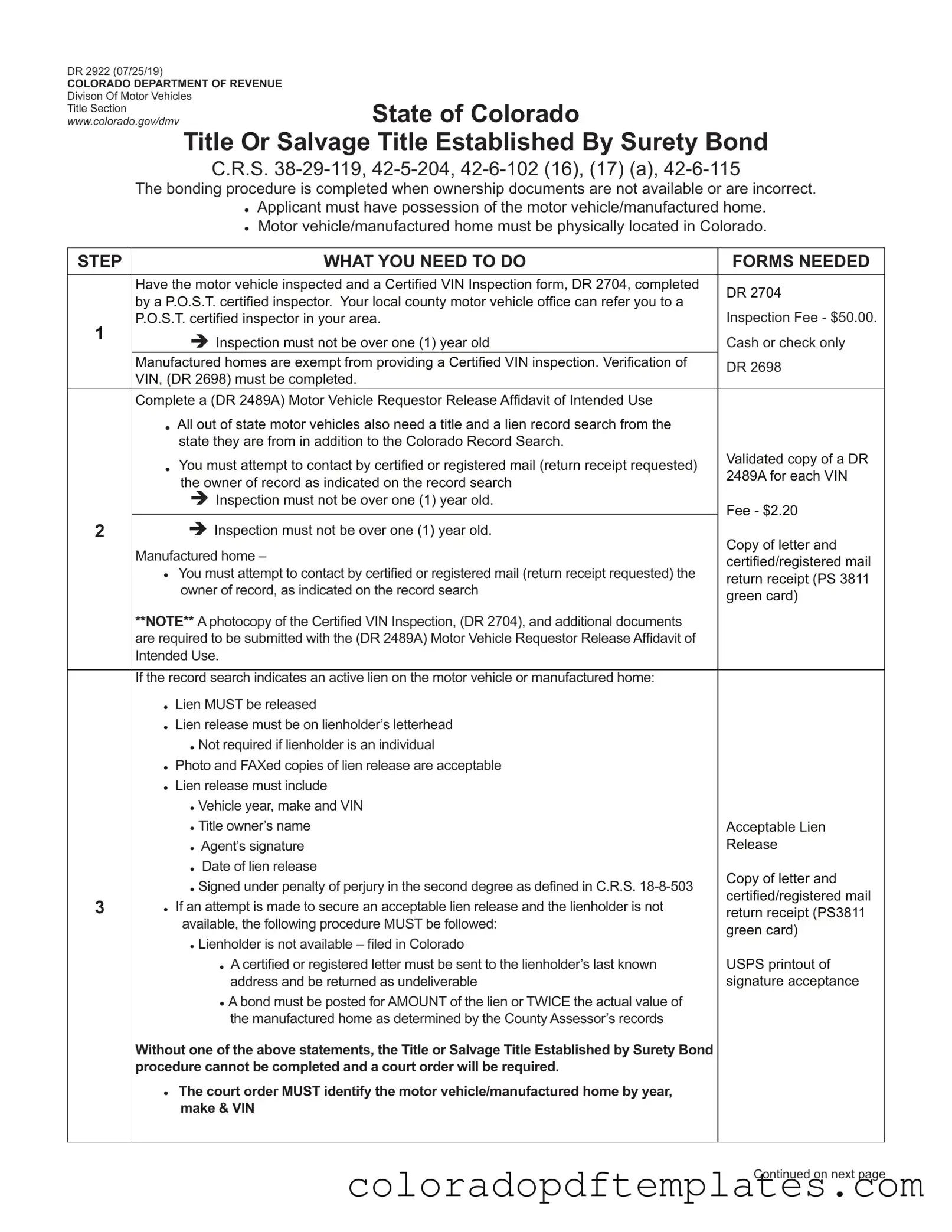The Colorado DR 2922 form is used to establish a title or salvage title for a motor vehicle or manufactured home when ownership documents are not available or are incorrect. This process involves a bonding procedure as outlined by Colorado state law.
Individuals who possess a motor vehicle or manufactured home located in Colorado but lack proper ownership documents need to complete this form. This may include those who have purchased vehicles without titles or those whose titles have been lost or damaged.
-
Have the motor vehicle inspected by a P.O.S.T. certified inspector and complete the Certified VIN Inspection form (DR 2704).
-
Verify the VIN using form DR 2698.
-
Complete the Motor Vehicle Requestor Release Affidavit of Intended Use (DR 2489A).
-
Provide evidence of any liens and obtain lien releases if necessary.
-
Complete any additional documentation required for manufactured homes, if applicable.
What is a Certified VIN Inspection?
A Certified VIN Inspection is an examination performed by a P.O.S.T. certified inspector to verify the vehicle's identification number and confirm its roadworthiness. This inspection must be completed within one year prior to submitting the DR 2922 form.
What if there is an active lien on the vehicle?
If the record search indicates an active lien on the motor vehicle or manufactured home, the lien must be released. This release must be documented on the lienholder’s letterhead, unless the lienholder is an individual. In cases where the lienholder cannot be contacted, specific procedures must be followed to secure a lien release.
Are there any fees associated with the DR 2922 process?
Yes, there are several fees involved in the process. For example, the inspection fee is typically $50. Additionally, there may be fees associated with obtaining copies of documents or other necessary forms. It's important to verify the total costs with your local county motor vehicle office.
What documentation is needed for manufactured homes?
For manufactured homes, you must provide a court order or judgment for possession, proof of ownership of the real property where the home is located, and evidence of paid property taxes. These documents are necessary to complete the bonding process for the title.
Once you have completed the necessary steps outlined in the DR 2922 form, you can apply for a title or salvage title at your local county motor vehicle office. Ensure you bring all required documentation and forms, including proof of identification.
